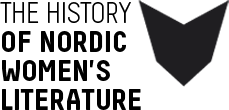By the mid-1790s the Swedish author Anna Maria Lenngren was already a major name. She bridged the two great literary golden ages in the history of Swedish literature: on the one side, the Gustavian epoch, and on the other side, Romanticism, which had its breakthrough in 1809.Between 1793 and 1800, Anna Maria Lenngren wrote one-hundred-and-twenty poems. Thereafter, they flowed more sparsely from her pen. In 1800, the Swedish Academy awarded her an annual pension. In 1798, she began preparing a list of the texts that might be considered for inclusion in a collected edition of her works. Her proud programmatic poem “Invocation”, published in 1809, which outlined her aesthetics and was addressed to Apollo, would suggest that she took her writing most seriously. If all that her lyre has produced is “capricious fancy”, she says in the final stanza, then it deserves to be crushed! It is a highly self-assured and self-important voice speaking, and in the face of incipient Romanticism’s “delirium” the voice asks for Enlightenment “courage”.
Articles
Virtue is discussed everywhere in eighteenth-century women’s literature; and we do not have to look very far in the contemporaneous references to women authors and writers before we find feminine virtue cited as justification for her writing and the purpose of her work. Whether a writing woman’s role is that of well-read lady, confidential diarist, religious confessor, or experienced writer, feminine virtue is and will remain her destiny.
The Swedish press became an established medium during the eighteenth century. The second half of the century produced a number of periodicals expressly designed for a female readership; Frustugo Bibliothek, Fruntimmers-Tidningar (the Women’s News), Blad för Fruntimer (Magazine for Women), and many more. A number of these periodicals address the reader in what sounds like a female voice.The publishers and writers were, however, on the whole anonymous, hidden behind signatures and pseudonyms; games with a gender-crossing play on names were legion at the time. Male writers often adopted a female identity with a woman’s name, or wrote from a female position as woman’s intimate and best friend. Conversely, the legal and social circumstances were such that, in those cases where it actually was a woman wielding the pen, she was seldom able to sign the text in her own name.At the time of the launch of a literature that invited intimacy, addressed specifically to women readers, the female voice was thus often still disguised.
On Danish Eighteenth-Century Periodicals and Libraries
The eighteenth-century women dramatists cover a wide spectrum of styles. Both Anna Catharina von Passow and Birgitte Catharine Boye wrote pastorals, but they soon branched off in different directions. Boye devoted her pen to the heroic drama, and Passow began to experiment with the new form of comedy, which was the genre on which Charlotta Dorothea Biehl concentrated.While Boye’s stage art represents a high-flown conclusion to the eighteenth-century heroic drama, Passow and Biehl are of an earlier generation; they were innovative and made a major contribution to the continuation of the Danish public theatre in the period following Holberg’s death in 1754.
The Danish authors Charlotte Dorothea Biehl and Sophia Lovisa Charlotte Baden, along with a number of anonymous women, wrote prose that was both moralising and emotionally instructive. Biehl in her moral tales. Baden in her moral epistolary tales.Family issues and scheming love stories are key to a protracted plot, the mainspring of which is often a dispute concerning a contract of marriage. The major role models were Richardson, his French disciple Marmontel, and the German writer Gellert.
The Female Pattern in Folk Poetry and Folklore Collection
In earlier times the folktales known as “Narrationes Lubricae”, salacious stories, were narrated by adult informants in the rural areas of Norway, in the villages. There are many women registered among the adult informants. The crude stories were/are by no means the sole reserve of male company.We know the names of approximately two-thirds of those who narrated the comic erotic material, and of these exactly one half are women. This is perhaps surprising. Many consider the folktale and, one would have thought, the cruder type in particular, to be more of a male-centric form. We connect female informants primarily with ballads, in which music and aesthetics are in the foreground.
Even though much Nordic ballad tradition of the last four hundred and more years has been lost, the surviving tradition represents an overwhelming amount of source material. The intense registration and publication work undertaken during the last century and a half has resulted in an overview of the Nordic tradition.The extensive corpus of material on which these editions are based contains songs that were sung by and about women. From the host of female singers, collectors, and scribes, we will here select ballads dealing with women’s personal and fundamental experiences – experiences with critical bearing on family and lineage.
Christiane Koren’s travel diary from her journey to Copenhagen is a first-rate and personal story about the dawning of the new century in Denmark. With elegant, spirited, and eloquent prose, Koren shares her experiences with her friends and family. The eighteenth century was irrevocably over, and Koren’s description of life in Madam Møller’s boarding house and at Bakkehuset tells us about the new female role of muse and ‘poet mother’ within an intimate circle of young men and up-and-coming geniuses.

